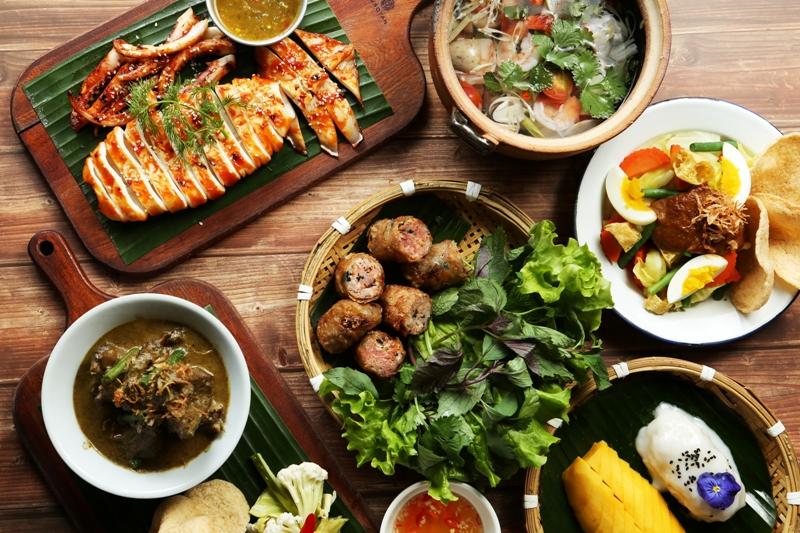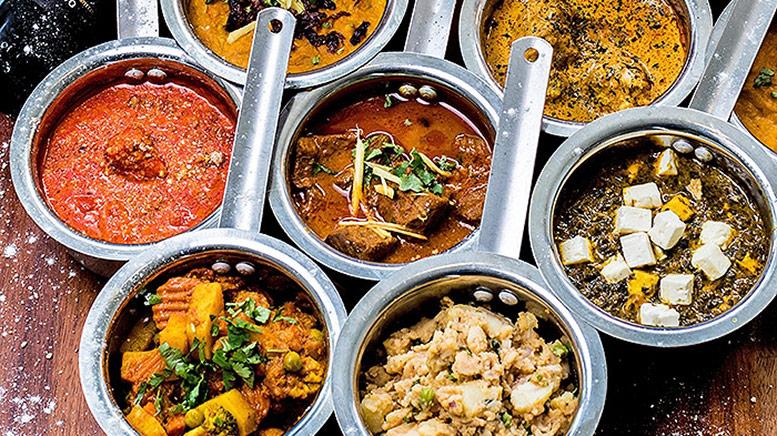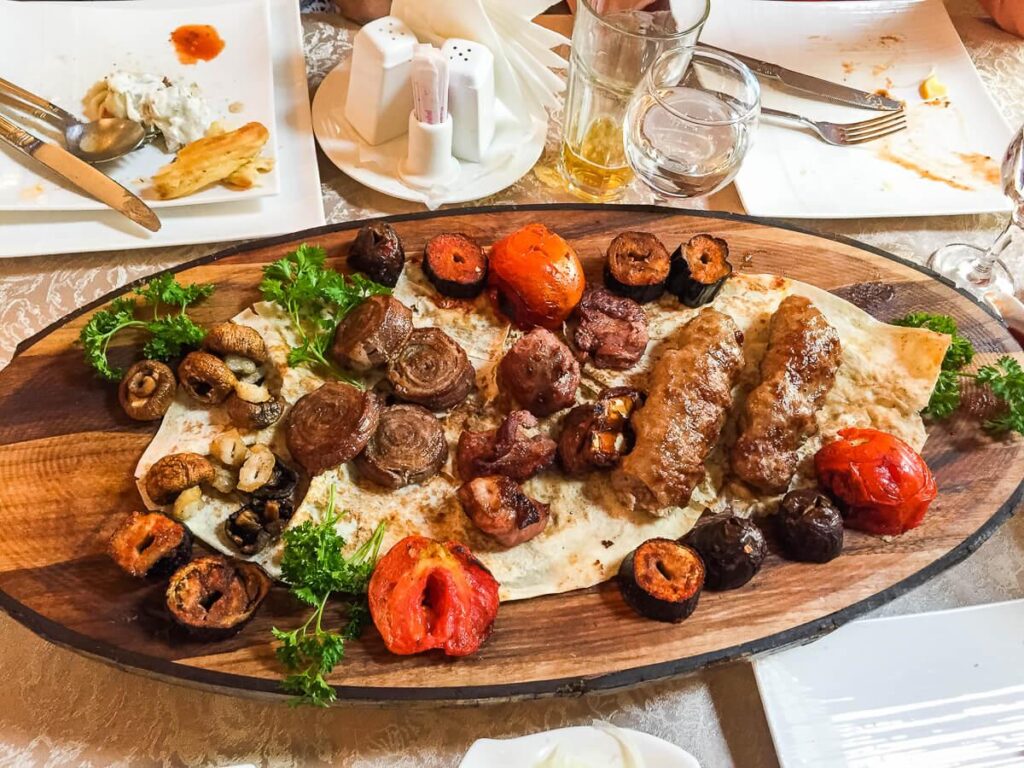Blogs
Fast Changing Asian Food Culture
Asian food way of life is an intricate and diverse tapestry that weaves collectively a myriad of flavors, techniques, and traditions. Encompassing a substantial expanse of nations and areas, from the Far East to the Indian subcontinent, Asia’s culinary landscape is a mirrored image of its deep-rooted history, numerous geography, and cultural richness.
In this exploration, we delve into the captivating world of Asian food culture, tracing its origins, key traits, and the profound effect it has had on international gastronomy.

This evolution is reshaping traditional culinary practices, challenging installed norms, and fostering a dynamic environment in which innovation and fusion thrive.
Globalization and Culinary Cross-Pollination:
The introduction of globalization has facilitated the change of culinary thoughts, elements, and cooking techniques throughout borders. Traditional Asian dishes are no longer restricted to their places of foundation but have emerge as global phenomena. This interconnectedness has led to the emergence of fusion cuisines, mixing conventional Asian flavors with substances and cooking styles from various culinary traditions.
Technological Advancements in Food Production:
Technological improvements have revolutionized the manner meals is produced, allotted, and fed on in Asia. The upward push of food delivery systems, on-line marketplaces, and virtual kitchens has made various cuisines more on hand to a wider audience. Additionally, innovations in meals processing and protection techniques have enabled the export of Asian ingredients, allowing humans around the sector to incorporate them into their daily diets.
Changing Demographics and Urbanization:
Rapid urbanization and changing demographics are influencing the food way of life in Asia. As greater people migrate to cities searching for employment opportunities, there may be a developing call for for convenient and diverse food alternatives. This has caused the proliferation of street meals carriers, meals markets, and casual dining establishments, contributing to the democratization of culinary stories.
Health and Wellness Trends:
A shift toward more healthy life and accelerated cognizance of the impact of diet on nicely-being have encouraged Asian food tradition. Traditional ingredients and cooking strategies which can be perceived as more healthy, together with the ones used in plant-primarily based diets and traditional medicinal practices, are gaining reputation. The intersection of traditional flavors with contemporary fitness-conscious developments is shaping a brand new culinary panorama in Asia.

Culinary Tourism and Cultural Exchange:
The rise of culinary tourism has led to a heightened appreciation for the rich and numerous meals cultures of Asia. Travelers are seeking authentic culinary experiences, prompting neighborhood cooks and meals marketers to exhibit their traditional dishes. This change of culinary know-how and appreciation for local specialties is contributing to the renovation and evolution of traditional Asian food cultures.The pervasive influence of social media has appreciably impacted the way human beings find out, share, and enjoy food. Culinary influencers and food bloggers play a vital role in shaping meals traits and introducing innovative dishes to a international audience. This virtual panorama has end up a platform for the party of diverse Asian cuisines and the exploration of novel culinary fusions.
The converting panorama of Asian food way of life reflects a dynamic fusion of subculture and innovation, driven with the aid of a myriad of things that have reshaped culinary practices throughout the continent. This evolving gastronomic scene encompasses numerous factors, starting from the globalization of traditional dishes to the integration of novel substances, cooking techniques, and fitness-conscious traits. The transformation of Asian food subculture is a rich tapestry that weaves together the past, present, and destiny, providing a glimpse into the complex interplay of cultural, social, and economic dynamics.
Globalization of Asian Cuisine:
Globalization has propelled Asian cuisine to the vanguard of the arena’s culinary degree. Traditional dishes, once confined to their nations of foundation, have transcended borders and turn out to be cherished worldwide. Iconic dishes like sushi, ramen, and dim sum have emerge as international staples, adapted and embraced by using numerous groups. This international reputation now not handiest celebrates the richness of Asian culinary traditions but also fosters cultural alternate.
The evolution of Asian food tradition is marked by means of a spirit of experimentation and fusion. Chefs and domestic chefs alike are blending conventional flavors with global impacts, resulting in progressive and eclectic dishes. Fusion cuisine, which marries conventional Asian elements with the ones from different culinary traditions, has given upward push to particular and thrilling flavor profiles that challenge conventional notions of authenticity.
Rise of Street Food and Casual Dining:
Urbanization and converting existence have contributed to the upward push of avenue meals and casual eating experiences throughout Asia. Street meals markets, meals vans, and pop-up stalls provide a numerous array of low cost and convenient options, democratizing get entry to to a extensive range of flavors. This fashion not best displays the fast-paced nature of modern existence but also provides a platform for small vendors to showcase regional specialties.

Historical Roots
The roots of Asian food subculture can be traced lower back hundreds of years, with each vicinity boasting its personal specific culinary history. China, taken into consideration the cradle of Asian civilization, has a culinary historical past that spans over four millennia. Ancient Chinese texts, which includes the Yinshan Zhengyao, offer insights into the sophisticated culinary practices of the time, highlighting the significance of stability, harmony, and the usage of seasonal substances.
India, some other historical civilization, has a rich culinary subculture deeply intertwined with religious ideals, social structures, and nearby variety. The idea of Ayurveda, an ancient device of medicine, considerably stimulated Indian cuisine, emphasizing the stability of flavors and the use of components for their medicinal residences.
Key Characteristics of Asian Food Culture
Harmony of Flavors:
Central to Asian delicacies is the sensitive stability and harmony of flavors. The 5 fundamental tastes—sweet, sour, salty, bitter, and umami—are meticulously mixed to create dishes that are not most effective scrumptious however additionally nutritionally balanced.
Diversity of Ingredients:
Asian culinary landscapes are characterized through a sizeable array of substances, from distinct spices and herbs to particular vegetables and end result. The use of sparkling, neighborhood, and seasonal produce is paramount, contributing to the individuality of each local delicacies.
Culinary Techniques:
Asian cooking techniques are as diverse because the ingredients used. From stir-frying and steaming in Chinese cuisine to the intricate spice blends and slow-cooking strategies in Indian delicacies, each place has evolved its own set of culinary techniques that define its dishes.
Cultural Symbolism:
Food in Asia frequently goes beyond mere sustenance; it contains profound cultural symbolism. Many dishes are associated with fairs, rituals, and traditions, making them an imperative a part of the cultural material.
Regional Highlights:
Chinese Cuisine:
With a culinary records courting back thousands of years, Chinese delicacies is a tapestry of nearby flavors. From the fiery dishes of Sichuan to the delicate flavors of Cantonese delicacies, China’s numerous geography has given rise to a myriad of culinary traditions.
Japanese Cuisine:
Japanese delicacies, with its emphasis on sparkling, seasonal ingredients and aesthetic presentation, has received worldwide acclaim. Sushi, sashimi, and tempura are only a few examples of Japan’s culinary contributions which have captivated palates international.
Indian Cuisine:
Indian cuisine is a celebration of spices, shades, and textures. The use of a wide array of spices, such as cumin, coriander, and turmeric, creates the formidable and flavorful dishes that define Indian cooking. Each vicinity in India boasts its very own culinary identity, from the fiery curries of the south to the rich, aromatic dishes of the north.
Thai Cuisine:
Thai delicacies is known for its stability of candy, bitter, salty, and spicy flavors. Dishes like Tom Yum soup and Pad Thai have come to be international favorites, showcasing Thailand’s vibrant and fragrant culinary services.
Speciality of Asian Culture
The area of expertise of Asian tradition lies in its fascinating tapestry of traditions, values, and diversity that spans across a large and sundry landscape. Encompassing countries with historical civilizations together with China, India, Japan, and lots of others, Asian subculture is characterized with the aid of a profound admire for history and a harmonious combination of the old and the new. This cultural richness manifests in a myriad of approaches, from intricate art paperwork and philosophies like calligraphy and Feng Shui to the tricky rituals related to festivals and ceremonies.
Asian way of life aside is its potential to seamlessly fuse historical information with modern dynamism, creating a completely unique and timeless essence that keeps to resonate globally. Whether expressed through the problematic flavors of its delicacies, the elegance of traditional apparel, or the serenity of its gardens, Asian lifestyle stands as a testomony to the iconic beauty of a history deeply rooted in history yet continuously evolving with the passage of time.
Asian culture
Asian culture is in detail intertwined with its rich culinary traditions, developing a harmonious fusion of flavors, strategies, and rituals. Food serves now not simplest as sustenance but additionally as a means of cultural expression, storytelling, and connection. Each Asian country boasts a distinct culinary identity, reflecting its records, geography, and cultural affects.
In China, a country with a culinary history dating lower back hundreds of years, food is considered an art form. Traditional Chinese meals are characterized through a stability of flavors, hues, and textures. The use of substances consisting of soy sauce, ginger, and garlic imparts intensity to dishes, even as cooking techniques like stir-frying and steaming maintain the natural essence of elements. Meals are frequently shared family-style, reinforcing the significance of communal eating and familial bonds.
Food
Indian delicacies, with its vibrant spices and numerous local influences, is a sensory journey that displays the united states’s cultural tapestry. The use of spices like cumin, coriander, and cardamom creates the complex and layered flavors determined in dishes which include curry and biryani. Indian meals frequently contain lots of bread (roti, naan) and rice, and the practice of ingesting with one’s hands is a cultural tradition that complements the sensory experience.
Thai delicacies, recognized for its formidable and dynamic flavors, combines sweet, sour, salty, and spicy factors in a harmonious dance on the palate. Dishes like Tom Yum soup and Pad Thai are celebrated for their aromatic herbs, vibrant colours, and complex flavors. Thai eating lifestyle regularly involves sharing more than one dishes, selling a feel of communal amusement.
Traditions
In many Asian cultures, food is deeply intertwined with non secular and ceremonial traditions. In Japan, the New Year’s party entails special dishes like osechi-ryori, symbolizing prosperity and happiness for the coming year. In China, the Lunar New Year is marked by using a reunion dinner party with symbolic dishes representing luck and excellent fortune. In India, festivals such as Diwali are followed through a plethora of candies and savory treats.
Beyond the flavors, Asian culinary traditions also emphasize the artwork of presentation. Intricate garnishes, carefully arranged dishes, and the use of symbolic elements make contributions to the visible appeal of Asian food. Traditional dining practices, such as using communal hotpots in China or the practice of serving meals on banana leaves in South India, upload specific cultural dimensions to the eating revel in.
In essence, the food and traditions of Asian culture shape a colourful mosaic that celebrates variety, history, and the profound connection among humans and their culinary roots. Whether savoring a bowl of ramen in Japan, relishing the spices of a curry in India, or partaking inside the artful ritual of a traditional tea rite, Asian delicacies serves as a gateway to expertise and appreciating the intensity and richness of this diverse and dynamic cultural tapestry.
Importance
The importance of Asian culture transcends geographical limitations, encompassing a numerous array of traditions, values, and contributions which have fashioned the sector in numerous ways. Understanding and appreciating Asian subculture is important for several motives:
Cultural Diversity:
Asia is the sector’s largest and maximum populous continent, domestic to an extremely various variety of cultures, languages, and ethnicities. From the Himalayas to the islands of Southeast Asia, the cultural tapestry is woven with particular threads that make a contribution to the worldwide mosaic of human range.
Historical Significance:
Many of the arena’s oldest civilizations, which include the ones in China and the Indian subcontinent, originated in Asia. The history of Asian cultures spans millennia, imparting valuable insights into the development of human societies, technological improvements, and philosophical idea.
Philosophical Contributions:
Asian cultures have made good sized contributions to worldwide philosophy. The teachings of Confucius and Laozi in China, the non secular insights of Buddhism and Hinduism in India, and the Zen philosophy in Japan have inspired no longer most effective the East however also Western concept, fostering a deeper information of human lifestyles and ethics.
Artistic and Scientific Achievements:
Asian cultures have a wealthy artistic heritage, from the classical arts of calligraphy, traditional Chinese portray, and Japanese tea ceremonies to the difficult dance varieties of India. In science, historical Asian civilizations made groundbreaking contributions, consisting of the Chinese invention of paper, gunpowder, and the compass.
Economic Powerhouse:
The monetary importance of Asia can’t be overstated. Countries like China, Japan, India, and South Korea are primary gamers inside the international economic system, contributing to international alternate, investment, and technological improvement.
Traditional Medicine and Wellness Practices:
Asian cultures have lengthy embraced holistic techniques to health and well-being. Traditional practices which includes Ayurveda in India, traditional Chinese medicine, and Japanese herbal medicinal drug make a contribution specific views to the global discourse on nicely-being.
